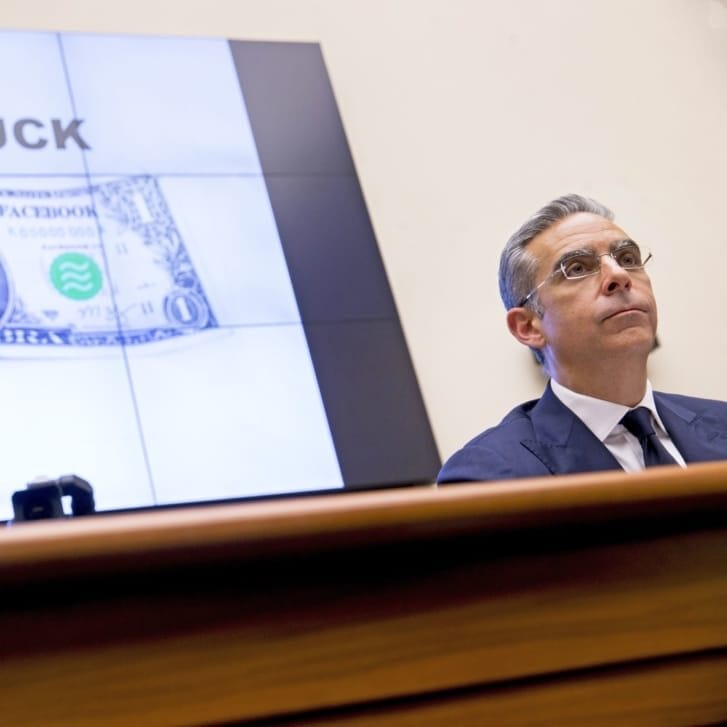With more Americans living longer, many older people lack the resources to sustain themselves in terms of income, housing, health insurance, and long-term care. They’re at one end of the so-called “longevity risk” spectrum; at the other end are sponsors of retirement plans that now have to finance people for longer periods after they retire. These circumstances provide opportunities for public-private partnerships to create financial products that help offset, pool, or transfer the longevity risks to other market participants while helping aging Americans support themselves.
“We are living in an aging society, and we are living longer,” according to Surya Kolluri WG92, a managing director at Bank of America whose responsibilities include thought leadership in the company’s retirement and personal wealth solutions business. “A baby born today has a one in three chance of living to 100 years old. And a female baby born today has a one in two chance of living to 100 years old. We need to be ready for 100-year lives. But you can’t finance these 100-year lives purely by public purse or purely by private purse. You need the two to come together.”
Olivia S. Mitchell, executive director of Wharton’s Pension Research Council, expanded on the need for public-private partnerships: “The traditional methods of coping with longevity, like relying on your own savings or relying on family, don’t always work that well anymore.”
How these partnerships could help older Americans strengthen their financial security was one of the topics discussed at an online symposium in May hosted by the Pension Research Council and Wharton’s Boettner Center for Pensions and Retirement Security. Mitchell and Kolluri moderated panel discussions at the conference, titled “Managing Longevity Risk: New Roles for Public/Private Engagement.” Participants discussed what rising longevity means for our future, how people perceive longevity risk, and the economics and psychology of working longer.
Expanding the Market for Property Tax Deferrals
Property tax deferrals could be a way to provide financial freedom for older Americans, said Alicia Munnell, director of the Center for Retirement Research at Boston College. Under such programs, local governments agree to collect on taxes when property is sold or when ownership passes to the next generation after the current owner’s death.
Kolluri explained how public-private partnerships could play a role in expanding the market for these deferrals: “The fact that you don’t bill the property tax is a public policy activity. Private-sector banks or other lenders would create a mortgage or lien on the property to complete the other end of the transaction, to become a public-private partnership.”
Many U.S. states, including California, Washington, Massachusetts, and Connecticut, offer seniors the ability to defer all property taxes, Munnell said. However, participation in property tax deferral programs remains low nationwide. More seniors could be encouraged to defer property taxes with innovative programs through which state governments reimburse local municipalities for their share of the forgone taxes, she said. She suggested features such as the ability to defer property taxes for up to $1 million in the assessed value of a home. She also suggested that state governments could permit seniors to defer their property taxes until the sum of deferrals, accumulated interest, and mortgages equals 60 percent of the assessed value of their homes.
In Munnell’s plan, such programs would be financed by states covering the interest cost on the deferrals and administrative costs by issuing bonds. The interest on those bonds would be paid by homeowners or the states, from their general revenues. If states don’t want to take on that financing cost, the private sector could buy aggregated loans and liens, securitize them, and sell those securities in the market, she said.
Munnell noted that many households won’t have enough money in retirement, and property tax deferral offers a cheap and easy way to tap home equity. Property tax deferral programs are self-financing on a household basis, but they need startup money from either government or a public-private partnership. “Increasingly, retirees will need to tap their home equity, and stable homeownership makes this option viable financially,” she said.
“The idea is that in the long run, these property tax deferral programs would be self-financing and self-sustaining,” Mitchell said. “When the individual moves out of the house or dies and then the house is sold, the property tax gets paid.” Over time, as more borrowers pass away, the city would be able to collect on taxes that were deferred.
The Opportunity in Reverse Mortgages
Reverse mortgages are another way for older Americans to unlock the money in their home equity. Here, homeowners could raise loans against the value of their homes that can be paid out either in a lump sum or as monthly installments. The loan would have to be repaid when the homeowner dies or if the property is sold.
“It’s well known that many, many older people have substantial home equity,” Mitchell said. “And yet it has been very difficult for them to access that wealth without moving out and selling the house. That’s also not something that older people necessarily want to do. Most older people would like to remain in their homes and age in place, if they can. So reverse mortgages are absolutely critical as a tool to help access some of that wealth.”
Federal law protects homeowners in reverse mortgages in that they don’t have to repay any balance that exceeds the value of their homes. On the flip side, borrowers can retain the contracted loan amount even if the value of their home falls below that level, or if they live long enough to collect more monthly payments than the lender expected. But in some cases, borrowers can face foreclosure “if they do not pay their property taxes or insurance, or maintain their home in good repair,” according to a guidance note from the National Council on Aging.
Despite their apparent attractiveness, reverse mortgages aren’t popular in the United States, with less than two percent of eligible borrowers taking out such loans, according to a Brookings Institution study. One reason is that potential borrowers are skeptical of scams, high fees, and fears of foreclosure. Alternately, they want to leave their properties for their children after they die.
Public-private partnerships could help find new ways for older Americans to use reverse mortgages, Mitchell said, pointing to Japan as an example. There, some prefectures — or municipalities — have innovative reverse mortgage programs for the elderly that allow them to borrow against the equity on their homes to retrofit the properties with railings or wider doors, to accommodate wheelchairs and other needs.
The Attraction of Longevity Bonds
Longevity bonds are also among the “whiteboard ideas” that could be considered, Kolluri said. As people live longer, the pension obligations for sponsors of defined benefit plans have become bigger. Those pension obligations and the associated longevity risks could be transferred to life insurers and reinsurers, he said. “Longevity risk may be an attractive asset class to institutional investors due to low correlation with other risk factors in their portfolios,” said John Kiff, a senior financial sector expert with the International Monetary Fund. He said investors could learn about how “longevity risk transfer markets” work from so-called CAT bonds — or catastrophe bonds — for which payouts are made when a catastrophe occurs.
Longevity bonds are like catastrophe bonds in how they protect sponsors of defined-benefit pension plans, according to Mitchell: “If people end up living longer than expected, the plan sponsor is going to be hung out to dry and not be able to pay all the benefits. In order to make a market in longevity risk, the risk needs to be pooled.” She explained how a longevity bond would work: “There would likely be an institution like a defined-benefit plan that would buy such a bond; the insurance company would sell it; and then the insurance company would pool the risk of longevity changes and surprises across its book of business.”
The biggest impediment to implementing longevity bonds is developing a robust framework around the related risks and finding ways to mitigate them. In order to generate income over, for example, a 30-year period, private-sector participants need to start with forecasts of variables such as interest rates, inflation, health-care costs, and long-term care needs, Kolluri said. The trick is being able to correctly prioritize the right variables to forecast, he added.
Mitchell suggested governments could help develop the market for such bonds: “It has been very difficult for insurers to obtain the granular data on mortality patterns across the population.”
The Need for Guaranteed Income
The common thread in all those discussions is a “latent demand for some sort of guaranteed income,” Kolluri said. “As the world has moved from defined-benefit plans to defined-contribution plans, you have offset the risk from a pooled vehicle to an individual. And we have not over the last two or three decades equipped that individual who was taking on the risk with any of the tools to manage that portfolio.”
Richard Fullmer, founder of Nuova Longevità Research, made a case in his presentation for pooled annuities. He explored the scope for state-sponsored defined-contribution pensions in the form of “low-cost assurance pools that deliver lifetime income through mortality pooling and strict enforcement of a budget constraint.” Those could take the form of pooled annuities or tontines, with lifetime income assured but the level of that income not insured or guaranteed, he said.
On top of the need for guaranteed income, innovative strategies are necessary to finance and deliver long-term care, said Nora Super, senior director of the Milken Institute’s Center for the Future of Aging. To improve funding and delivery, she focused on three possibilities. First, she suggested facilitating private and public insurance-product design for long-term care with increased funding to allow for better testing of models. Second, she called for Medicare coverage of long-term services and supports to be increased through the expansion of Medicare Advantage supplemental benefits, and by testing new benefit offerings that would allow insurers to gather data needed to measure health outcomes and related cost savings. Last, she called for improving cost savings and efficiency via better integration of technology with care delivery and by scaling successful funding models to allow for greater adoption.
Financing issues are especially relevant amid concerns that the Social Security trust fund won’t be able to honor its obligations after 2035, and in light of huge government deficits resulting from the COVID-19 pandemic. “There really isn’t much money left out there to tax to be able to support these social safety-net programs,” Mitchell said.
As a result of these pressures, retirees will need to work longer than before and become more financially literate in order to make safe choices in planning their financial futures, she added. “Governments can play an important role here in educating the population about the need to save and earn returns and not draw down their assets too quickly in retirement.”
Published as “Living to 100” in the Fall/Winter 2020 issue of Wharton Magazine.


























